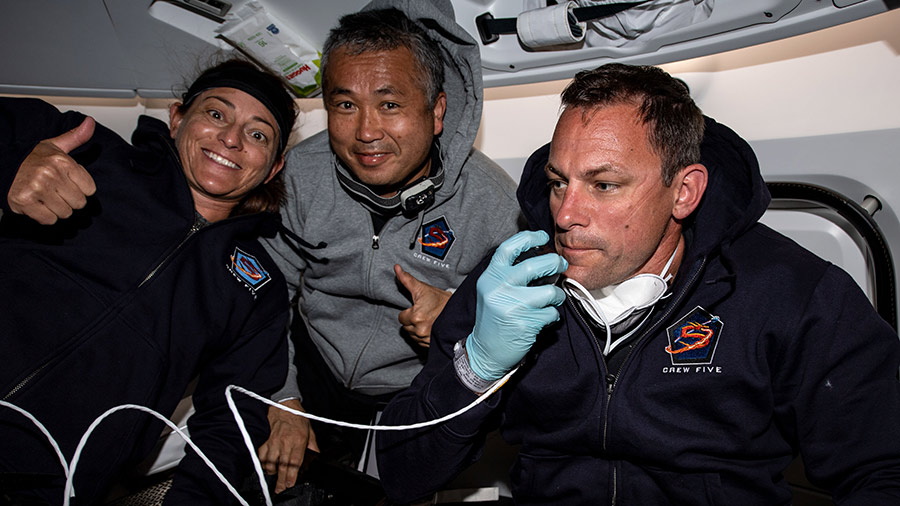Brain Science, BEAM Work as Station Orbits Higher for Cargo Mission

The seven-member Expedition 68 crew was busy aboard the International Space Station at the beginning of the week studying how the central nervous system adapts to microgravity and stowing hardware inside the BEAM module. The orbital residents also trained to operate Europe’s new robotic arm and packed a Russian cargo craft ahead of its upcoming departure.
Two astronauts from the U.S. and Japan joined each other on Monday to learn how the brain adapts to the lack of a traditional up and down reference in space. NASA Flight Engineer Josh Cassada kicked off the human research study in the morning while seated inside the Columbus laboratory module and wearing a virtual reality headset. Flight Engineer Koichi Wakata of the Japan Aerospace Exploration Agency (JAXA) took over in the afternoon for the free-floating portion of the study exploring how weightlessness impacts an astronaut’s reach-to-grasp function.
NASA Flight Engineers Frank Rubio and Nicole Mann partnered together inside the Bigelow Expandable Activity Module for cargo and maintenance activities. Rubio opened up BEAM and entered with Mann to organize hardware to be returned on the next SpaceX Dragon mission planned for later this year. Mann also collected air and surface samples from inside BEAM for microbial analysis.
First time space-flyer Anna Kikina of Roscosmos trained on a computer to learn how to operate the European robotic arm, the station’s third and newest manipulator, attached to the Nauka multipurpose laboratory module. New cosmonaut Dmitri Petelin began his day on water transfer activities before studying advanced Earth photography techniques. Finally, Commander Sergey Prokopyev, on his second station mission, updated the space lab inventory system and packed trash inside the ISS Progress 80 resupply ship docked to the Poisk mini-research module. The Progress 80 is due to leave the station next week packed with trash and obsolete gear for a fiery, but safe disposal above the south Pacific Ocean.
In the meantime, the station was orbiting higher on Monday to prepare for the arrival of a new cargo mission from Roscosmos. The ISS Progress 81 cargo craft docked to the Zvezda service module fired its engines for 10 minutes and 30 seconds today boosting the station’s orbit. The reboost places the orbital lab at the correct altitude to receive the Progress 82 resupply ship after it launches from Kazakhstan to replace the Progress 80 vehicle.
from Space Station https://ift.tt/l1uMnYm
Comments
Post a Comment